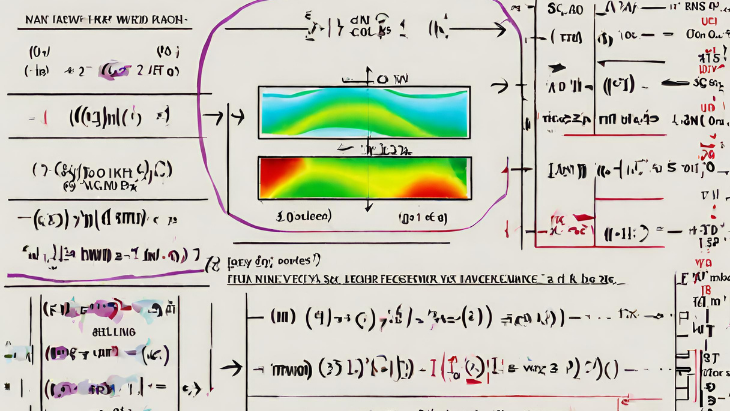In physics, frequency and wavelength are two key properties of waves. Frequency is the number of waves that pass a given point in a given amount of time, while wavelength is the distance between two consecutive peaks of a wave.
In this article, we will discuss how to find frequency from wavelength. We will begin by defining the relationship between frequency and wavelength, and then we will provide a step-by-step guide on how to calculate frequency from wavelength. This article is intended for a general audience, and no prior knowledge of physics is required.
How to Find Frequency from Wavelength
In physics, frequency and wavelength are two key properties of waves. Frequency is the number of waves that pass a given point in a given amount of time, while wavelength is the distance between two consecutive peaks of a wave.
The relationship between frequency and wavelength is given by the following equation:
f = c / λ
where:
- f is the frequency in hertz (Hz)
- c is the speed of light in a vacuum (299,792,458 meters per second)
- λ is the wavelength in meters
To find frequency from wavelength, simply divide the speed of light by the wavelength. For example, if the wavelength of a wave is 1 meter, then the frequency is:
f = c / λ
f = 299,792,458 m/s / 1 m
f = 299,792,458 Hz
This means that the wave passes a given point 299,792,458 times per second.
Here are some examples of how to find frequency from wavelength:
- The wavelength of visible light is typically between 400 and 700 nanometers. The frequency of visible light is therefore between 7.5 × 10^14 Hz and 4.3 × 10^14 Hz.
- The wavelength of radio waves can range from meters to kilometers. The frequency of radio waves is therefore between 3 × 10^8 Hz and 3 × 10^3 Hz.
- The wavelength of sound waves can range from meters to centimeters. The frequency of sound waves is therefore between 16 Hz and 20,000 Hz.
Wavelength Frequency Formula
In physics, wavelength and frequency are two key properties of waves. Wavelength is the distance between two consecutive peaks of a wave, while frequency is the number of waves that pass a given point in a given amount of time.
The relationship between wavelength and frequency is given by the following formula:
f = c / λ
where:
- f is the frequency in hertz (Hz)
- c is the speed of light in a vacuum (299,792,458 meters per second)
- λ is the wavelength in meters
This formula states that the frequency of a wave is inversely proportional to its wavelength. In other words, as the wavelength increases, the frequency decreases.
To use this formula, simply plug in the known values for wavelength and speed of light. For example, if the wavelength of a wave is 1 meter, then the frequency is:
f = c / λ
f = 299,792,458 m/s / 1 m
f = 299,792,458 Hz
This means that the wave passes a given point 299,792,458 times per second.
Here are some examples of how to use the wavelength frequency formula:
- The wavelength of visible light is typically between 400 and 700 nanometers. The frequency of visible light is therefore between 7.5 × 10^14 Hz and 4.3 × 10^14 Hz.
- The wavelength of radio waves can range from meters to kilometers. The frequency of radio waves is therefore between 3 × 10^8 Hz and 3 × 10^3 Hz.
- The wavelength of sound waves can range from meters to centimeters. The frequency of sound waves is therefore between 16 Hz and 20,000 Hz.
-
Wavelength Frequency Relationship
In physics, wavelength and frequency are two key properties of waves. Wavelength is the distance between two consecutive peaks of a wave, while frequency is the number of waves that pass a given point in a given amount of time.
The relationship between wavelength and frequency is given by the following equation:
f = c / λwhere:
- f is the frequency in hertz (Hz)
- c is the speed of light in a vacuum (299,792,458 meters per second)
- λ is the wavelength in meters
This formula states that the frequency of a wave is inversely proportional to its wavelength. In other words, as the wavelength increases, the frequency decreases.
Visual representation
To visualize the relationship between wavelength and frequency, imagine a wave traveling down a rope. The wavelength is the distance between two consecutive peaks of the wave, and the frequency is the number of peaks that pass a given point in a given amount of time.
If the rope is stretched longer, the wavelength will increase. However, the speed of the wave will remain the same. This means that the frequency must decrease in order to maintain the relationship between wavelength and frequency.
Examples
- The wavelength of visible light is typically between 400 and 700 nanometers. The frequency of visible light is therefore between 7.5 × 10^14 Hz and 4.3 × 10^14 Hz.
- The wavelength of radio waves can range from meters to kilometers. The frequency of radio waves is therefore between 3 × 10^8 Hz and 3 × 10^3 Hz.
- The wavelength of sound waves can range from meters to centimeters. The frequency of sound waves is therefore between 16 Hz and 20,000 Hz.
Conclusion
The relationship between wavelength and frequency is a fundamental concept in physics. It is important to understand this relationship in order to understand the behavior of waves.
Additional information
- The wavelength frequency relationship is applicable to all types of waves, including electromagnetic waves, sound waves, and water waves.
- The speed of light in a vacuum is a constant, so the frequency of a wave is inversely proportional to its wavelength.
- The wavelength frequency formula can be used to calculate the frequency of a wave from its wavelength, or to calculate the wavelength of a wave from its frequency.
Wavelength Frequency Calculation
In physics, wavelength and frequency are two key properties of waves. Wavelength is the distance between two consecutive peaks of a wave, while frequency is the number of waves that pass a given point in a given amount of time.
The relationship between wavelength and frequency is given by the following formula:
f = c / λ
where:
- f is the frequency in hertz (Hz)
- c is the speed of light in a vacuum (299,792,458 meters per second)
- λ is the wavelength in meters
To calculate the frequency of a wave from its wavelength, simply divide the speed of light by the wavelength. For example, if the wavelength of a wave is 1 meter, then the frequency is:
f = c / λ
f = 299,792,458 m/s / 1 m
f = 299,792,458 Hz
This means that the wave passes a given point 299,792,458 times per second.
To calculate the wavelength of a wave from its frequency, simply divide the speed of light by the frequency. For example, if the frequency of a wave is 1 hertz, then the wavelength is:
λ = c / f
λ = 299,792,458 m/s / 1 Hz
λ = 299,792,458 m
This means that the distance between two consecutive peaks of the wave is 299,792,458 meters.
Examples
- The wavelength of visible light is typically between 400 and 700 nanometers. The frequency of visible light is therefore between 7.5 × 10^14 Hz and 4.3 × 10^14 Hz.
- The wavelength of radio waves can range from meters to kilometers. The frequency of radio waves is therefore between 3 × 10^8 Hz and 3 × 10^3 Hz.
- The wavelength of sound waves can range from meters to centimeters. The frequency of sound waves is therefore between 16 Hz and 20,000 Hz.
Conclusion
Wavelength and frequency are two important properties of waves. The relationship between wavelength and frequency can be used to calculate the frequency of a wave from its wavelength, or to calculate the wavelength of a wave from its frequency.
Additional information
- The wavelength frequency formula is applicable to all types of waves, including electromagnetic waves, sound waves, and water waves.
- The speed of light in a vacuum is a constant, so the frequency of a wave is inversely proportional to its wavelength.
- The wavelength frequency formula can be used to calculate the frequency of a wave from its wavelength, or to calculate the wavelength of a wave from its frequency.
Tips for calculating wavelength and frequency
- When calculating wavelength from frequency, be sure to use the speed of light in a vacuum.
- When calculating frequency from wavelength, be sure to use the speed of light in a vacuum.
- Remember that wavelength and frequency are inversely proportional. This means that as wavelength increases, frequency decreases.
Wavelength Frequency Converter
A wavelength frequency converter is a tool that can be used to convert the wavelength of a wave to its frequency, or vice versa. This can be useful for a variety of purposes, such as calculating the energy of a wave or determining the type of wave.
How a wavelength frequency converter works
A wavelength frequency converter uses the following formula to convert wavelength to frequency:
f = c / λ
where:
- f is the frequency in hertz (Hz)
- c is the speed of light in a vacuum (299,792,458 meters per second)
- λ is the wavelength in meters
To use a wavelength frequency converter, simply enter the wavelength of the wave in the appropriate field. The converter will then calculate the frequency of the wave and display it.
Types of wavelength frequency converters
There are two main types of wavelength frequency converters:
- Online converters are available on a variety of websites. These converters are typically free to use and can be accessed from any device with an internet connection.
- Software converters are available for purchase or download. These converters offer more features and functionality than online converters, such as the ability to convert between different units of measurement.
Tips for using a wavelength frequency converter
- When using a wavelength frequency converter, be sure to enter the wavelength in the correct units. The most common units of measurement for wavelength are meters, nanometers, and micrometers.
- Remember that wavelength and frequency are inversely proportional. This means that as wavelength increases, frequency decreases.
Conclusion
A wavelength frequency converter is a valuable tool that can be used to convert between wavelength and frequency. This can be useful for a variety of purposes, such as calculating the energy of a wave or determining the type of wave.











